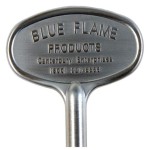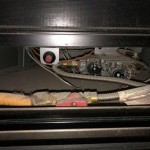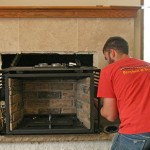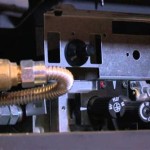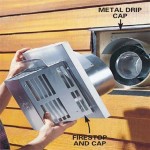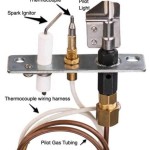The Allure and Practicality of Patio Propane Fireplaces
Patio propane fireplaces have become increasingly popular for homeowners seeking to extend the usability of their outdoor spaces. These fireplaces offer a combination of aesthetic appeal, practical warmth, and ease of use, making them a desirable addition to patios, decks, and gardens. Unlike traditional wood-burning fireplaces, propane models eliminate the need for firewood storage and reduce the mess associated with ashes and smoke. This article explores the various aspects of patio propane fireplaces, including their benefits, types, considerations for selection, and maintenance requirements.
Benefits of Choosing a Propane Fireplace for Your Patio
One of the primary advantages of a propane fireplace is its convenience. Lighting a propane fireplace is typically as simple as turning a knob and pressing an igniter button. This contrasts significantly with the effort required to start and maintain a wood-burning fire. Furthermore, the flame height is easily adjustable, allowing users to quickly control the amount of heat produced. This adaptability is particularly useful as outdoor temperatures fluctuate throughout the evening.
Propane fireplaces also offer a cleaner burning experience compared to wood-burning alternatives. They produce minimal smoke and ash, reducing the impact on air quality and minimizing the need for frequent cleanup. This makes them a more environmentally friendly option for those concerned about their carbon footprint. Additionally, the absence of smoke eliminates the potential for irritating neighbors or causing damage to outdoor furniture.
Another significant benefit is the portability of some propane fireplace models. Many are designed to be easily moved around a patio or deck, allowing users to reposition them as needed based on seating arrangements or wind direction. This flexibility is especially valuable for those who enjoy rearranging their outdoor spaces frequently. Even larger, more permanent models can be relatively easily disconnected from their propane source for maintenance or seasonal storage.
Types of Patio Propane Fireplaces Available
The market offers a diverse range of patio propane fireplaces, each with unique features and design aesthetics. Understanding these different types is crucial for selecting the model that best suits individual needs and preferences. The classification can be done based on design, function, and portability.
Tabletop propane fireplaces represent a compact and versatile option. These units are typically small enough to be placed on an outdoor table, providing a central source of warmth and ambiance for intimate gatherings. They are often fueled by small, disposable propane canisters, making them easy to use and maintain. Tabletop models are available in a variety of styles, from modern minimalist designs to more traditional ornate options.
Fire pit tables, also known as chat tables, are larger and more substantial than tabletop fireplaces. These tables incorporate a central fire pit area, typically filled with decorative glass or rocks. They provide both a functional table surface and a source of heat, making them ideal for outdoor dining and conversation. Fire pit tables are usually fueled by a standard propane tank, which is often concealed within the table's base.
Propane fire bowls offer a similar aesthetic to fire pit tables but without the surrounding table surface. These bowls are designed to sit directly on the ground or on a pedestal, creating a dramatic focal point in an outdoor space. They are available in a wide range of sizes and materials, from lightweight cast aluminum to more substantial concrete or stone.
Freestanding propane fireplaces resemble traditional wood-burning fireplaces in their design. These units often feature a chimney or flue, although it is purely decorative since propane burns much cleaner than wood. Freestanding models provide a more classic and substantial look, making them a popular choice for those seeking to replicate the ambiance of an indoor fireplace outdoors.
Lastly, built-in propane fireplaces are permanent installations that are integrated into an existing patio structure, such as an outdoor kitchen or seating area. These models require professional installation and are typically more expensive than portable options. However, they offer a seamless and customized look, enhancing the overall design of the outdoor space.
Key Considerations When Selecting a Patio Propane Fireplace
Choosing the right patio propane fireplace requires careful consideration of several factors, including size, heat output, material, safety features, and budget. Failing to address these aspects can lead to dissatisfaction with the purchase or even safety hazards.
The size of the patio or deck should be a primary consideration. A larger space may require a larger fireplace with a higher BTU (British Thermal Unit) rating to effectively heat the area. Conversely, a smaller patio may only need a smaller, more compact model. Overly large fireplaces in smaller patios can create an uncomfortable overbearing effect, while underpowered fireplaces in large patios are a waste of resources.
Heat output is another critical factor. BTU rating indicates the amount of heat the fireplace can produce per hour. As a general guideline, a 40,000 BTU fireplace can effectively heat an area of approximately 400 square feet. It is important to consider the local climate and the desired level of warmth when determining the appropriate BTU rating. Colder climates might benefit from higher BTU ratings for comfortable outdoor enjoyment even during winter.
The material of the fireplace should be durable and weather-resistant. Common materials include cast aluminum, stainless steel, concrete, and stone. Cast aluminum is lightweight and resistant to rust, while stainless steel offers a sleek and modern look. Concrete and stone provide a more natural and rustic appearance. The choice of material should also complement the existing outdoor décor.
Safety features are paramount when selecting a propane fireplace. Look for models with safety shut-off valves that automatically turn off the gas supply if the flame is extinguished. Also, consider models with spark screens or guards to prevent embers from escaping and potentially causing a fire. It is crucial to follow all manufacturer's instructions and local safety codes when installing and operating a propane fireplace.
The budget is always a factor when making any significant purchase. Patio propane fireplaces range in price from a few hundred dollars for smaller tabletop models to several thousand dollars for larger, more elaborate units. It is important to establish a budget and stick to it, while still ensuring that the selected fireplace meets your needs and safety requirements. It's also wise to factor in the ongoing costs of propane to ensure that the fireplace remains within budget in the long run.
Consider the overall design and aesthetic of the outdoor space. The fireplace should complement the existing furniture, landscaping, and architectural style. A modern patio might benefit from a sleek stainless steel fireplace, while a more traditional patio might be better suited to a concrete or stone model.
Ease of use and maintenance is an important factor. Look for models with simple controls and easy-to-clean surfaces. Some fireplaces may require more frequent maintenance than others, so it is important to understand the specific maintenance requirements before making a purchase.
Maintaining Your Patio Propane Fireplace for Longevity and Safety
Proper maintenance is essential for ensuring the longevity and safe operation of a patio propane fireplace. Regular cleaning, inspection, and servicing can prevent potential problems and extend the lifespan of the unit. Neglecting maintenance can lead to malfunctions, safety hazards, and costly repairs.
Regular cleaning is vital for removing dirt, debris, and spider webs that can accumulate within the fireplace. Use a soft brush or cloth to clean the exterior surfaces, and a vacuum cleaner with a brush attachment to remove debris from the burner area. Avoid using harsh chemicals or abrasive cleaners, as these can damage the finish of the fireplace.
Inspect the gas lines and connections regularly for leaks. Use a soapy water solution to check for leaks by applying it to the connections and looking for bubbles. If you detect a leak, immediately turn off the gas supply and contact a qualified technician for repairs. Never attempt to repair gas lines yourself, as this can be extremely dangerous.
Clean the burner ports regularly to ensure proper flame distribution. Clogged burner ports can cause uneven flames or even prevent the fireplace from lighting. Use a small wire or needle to clear any blockages in the burner ports. Be careful not to damage the ports during cleaning.
Protect the fireplace from the elements when it is not in use. Use a custom-fitted cover to protect the fireplace from rain, snow, and sun. This will help prevent rust, corrosion, and fading. Store the fireplace in a dry, sheltered location during the off-season if possible.
Schedule regular servicing by a qualified technician. A professional inspection can identify potential problems that may not be apparent during routine maintenance. A technician can also clean and adjust the burner, gas lines, and other components to ensure optimal performance and safety. It's a good practice to have the gas line connections checked and possibly tightened by a professional at least every other year.
Replace the propane tank as needed. Follow the manufacturer's instructions for replacing the propane tank. Ensure that the tank is properly connected and that there are no leaks before using the fireplace. Store spare propane tanks in a well-ventilated area away from heat and ignition sources. Pay close attention to the fill level of the propane tank, and replace or refill it as needed. Running out of propane in the middle of an event can be a frustrating experience.
By following these maintenance guidelines, homeowners can ensure that their patio propane fireplace remains a safe, functional, and aesthetically pleasing addition to their outdoor living space for years to come. Consistent care and attention will not only extend the lifespan of the fireplace but also provide peace of mind knowing that it is operating safely and efficiently.

Propane Fire Pits Why You Might Want One Pgagnon

Outdoor Propane Wood Burning Fireplaces Real Flame

Outdoor Propane Fire Bowls Pits Real Flame

Paramount Propane 47 25 In Broe Outdoor Fireplace Fp 285 Réno Dépôt

Patio Propane Firepit Table Rectangle Corten Steel Gas Fire Pits China Made In Com

Nuu Garden 30 In Square Outdoor Propane Gas Fire Pit Table With 50000 Btu Af006 01 The Home Depot

Veikous Outdoor Propane Gas Fire Pit Table For Outside Patio With Lid

Outdoor Propane Wood Burning Fireplaces Real Flame

Patio Propane Fire Column Gas Fireplace Stone Look Outdoor Heater Beige Gray

Domi Propane Fire Pits Square Table 50 000 Btu Outdoor Gas Pit With Lid And Lava Rock
Related Posts

